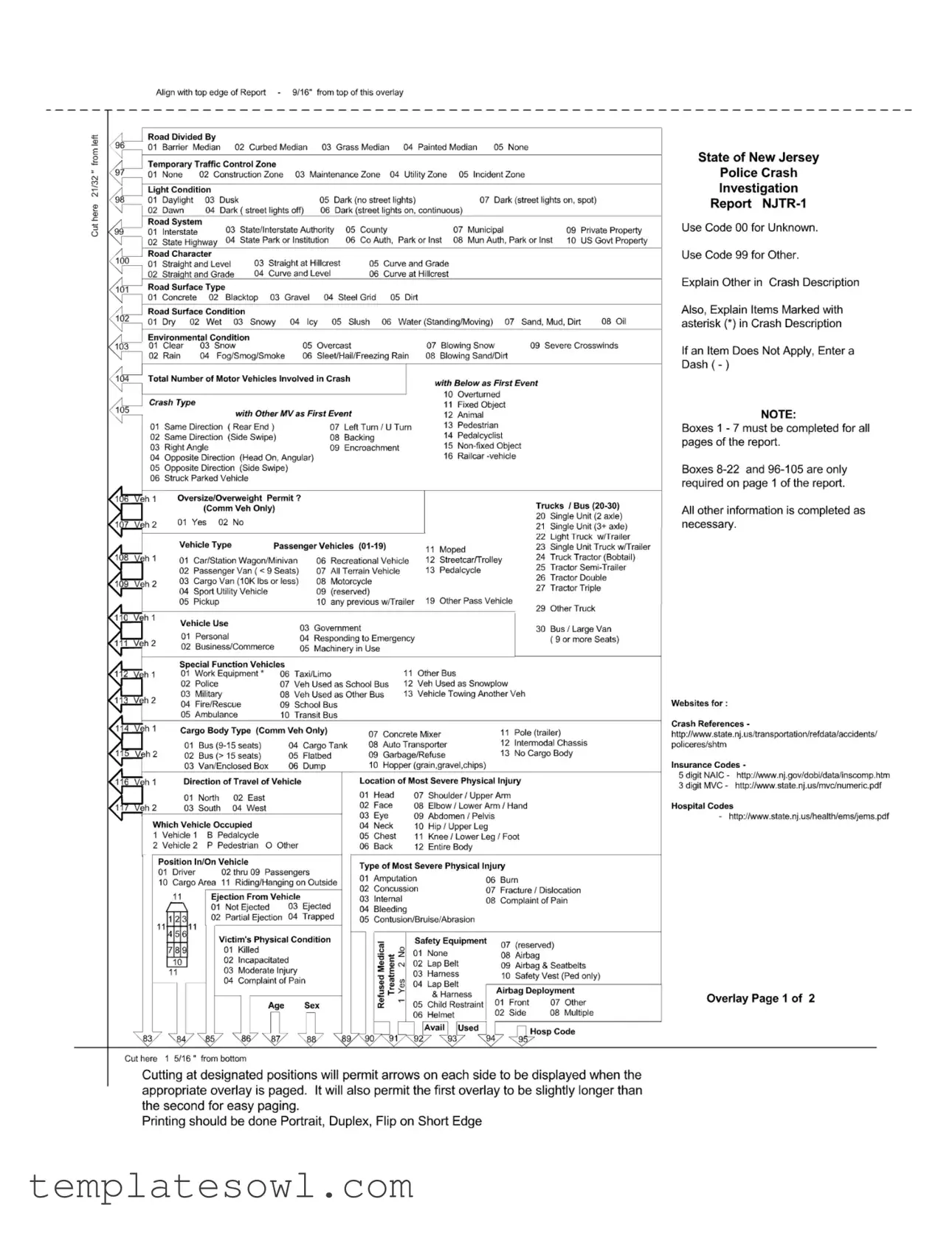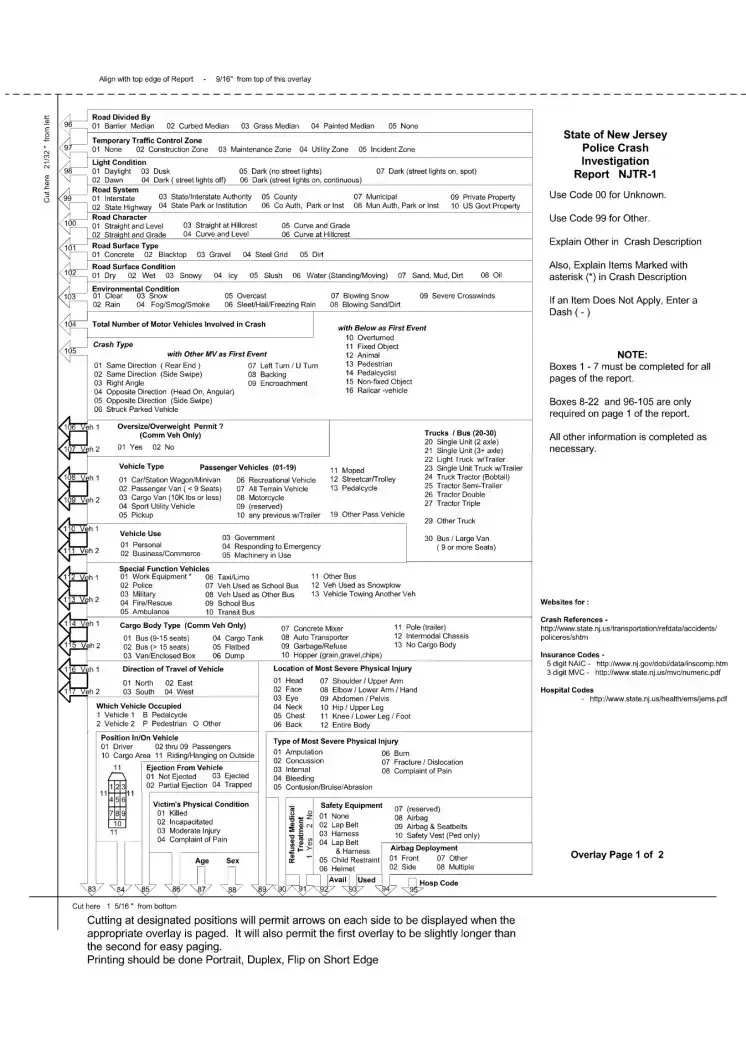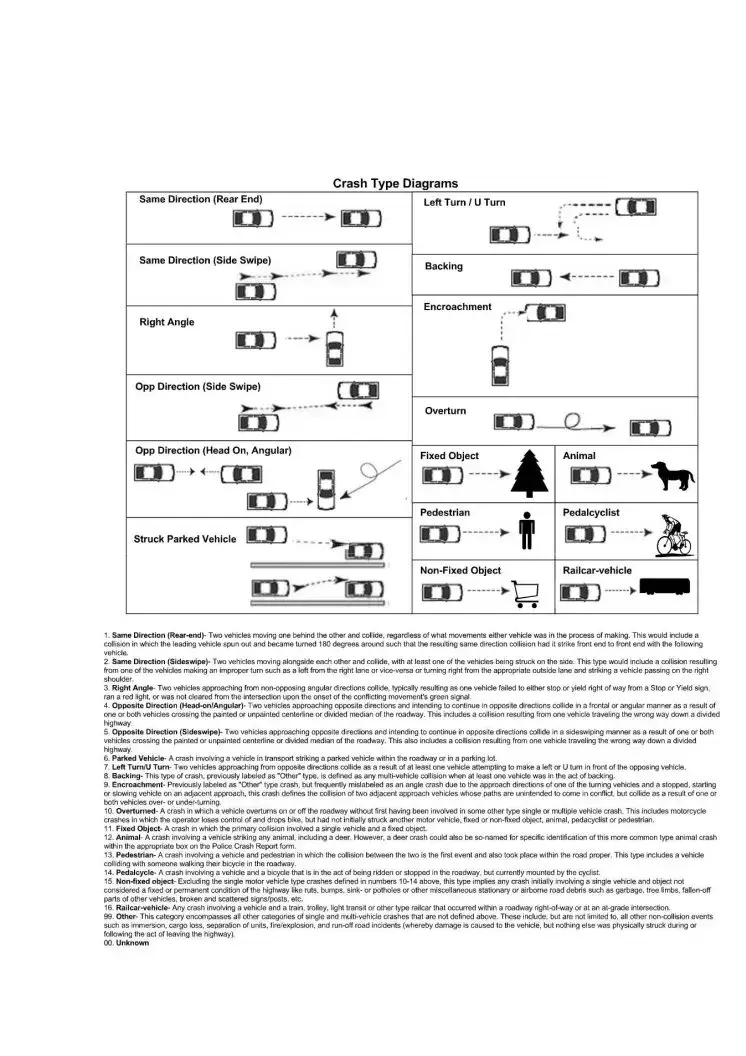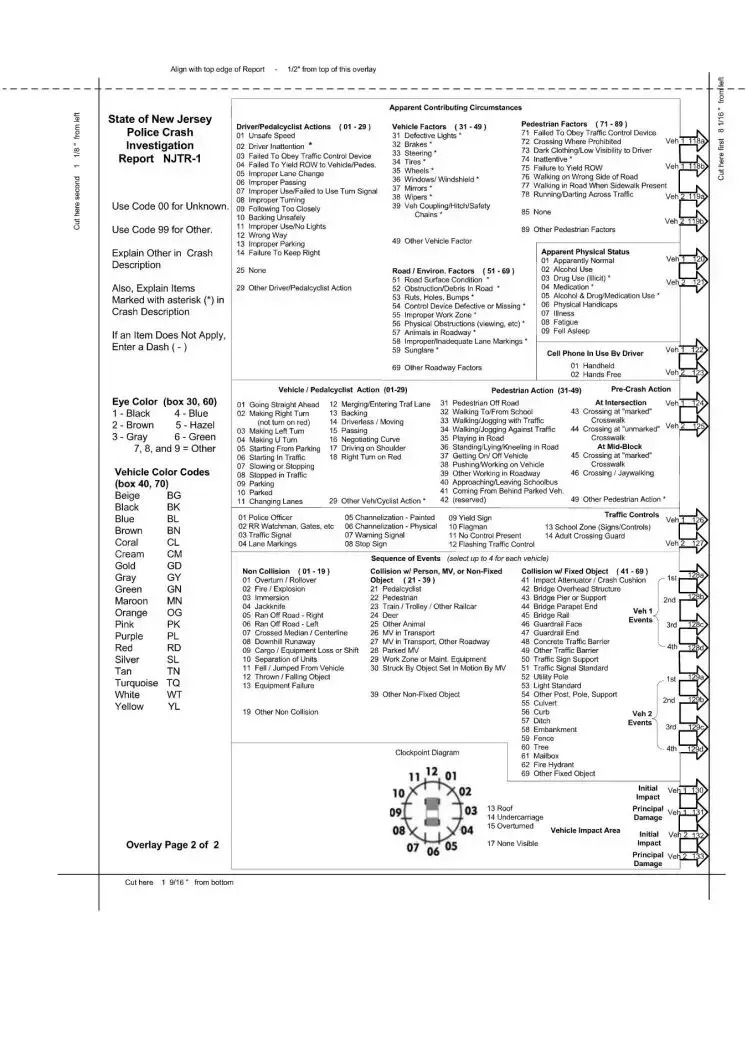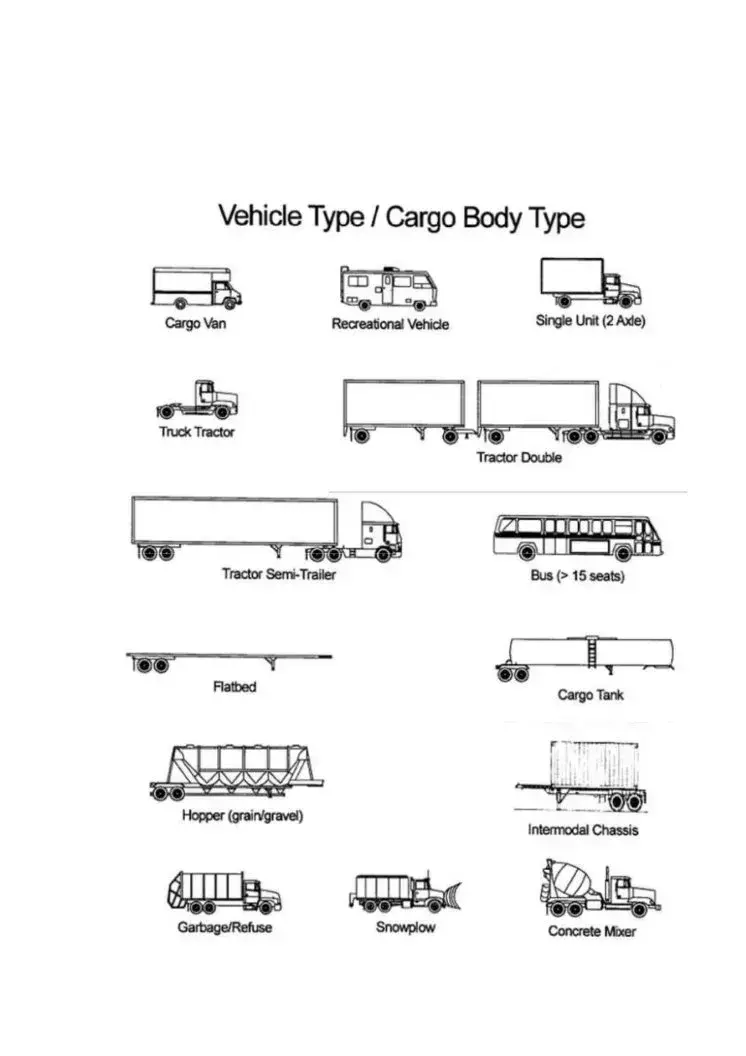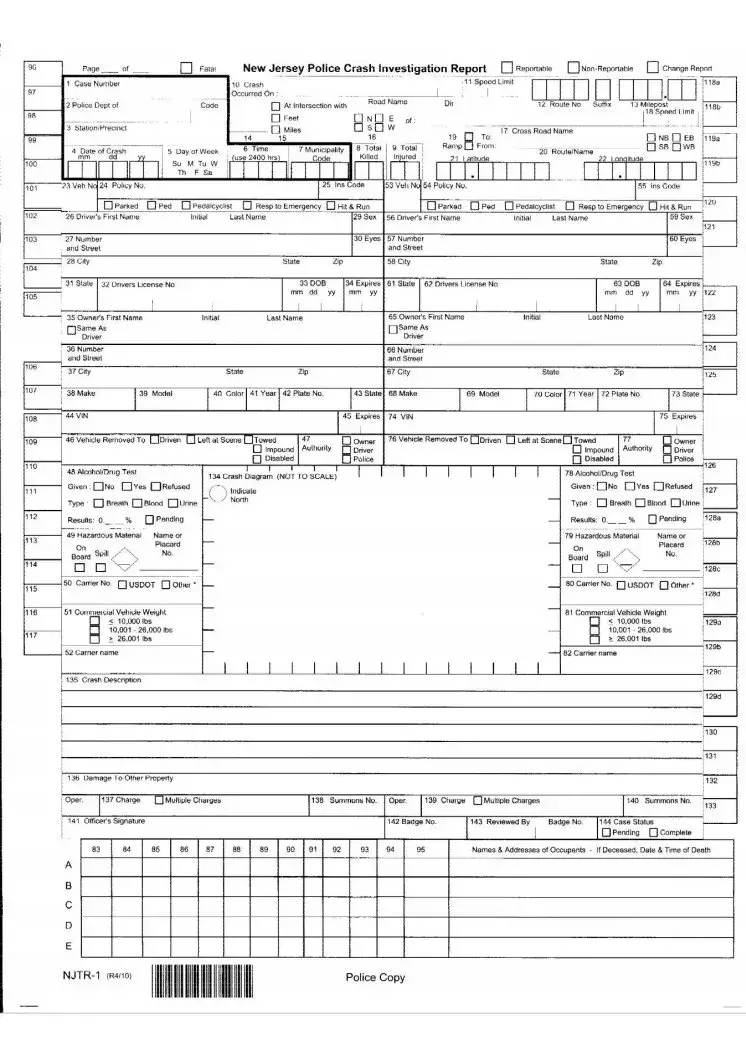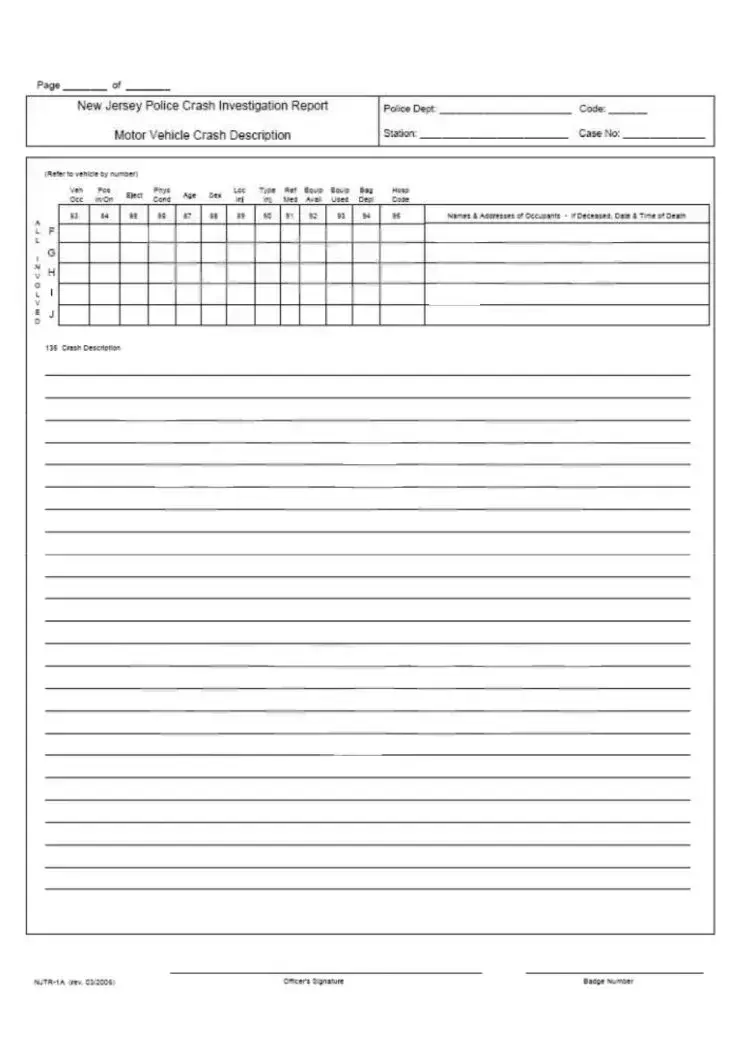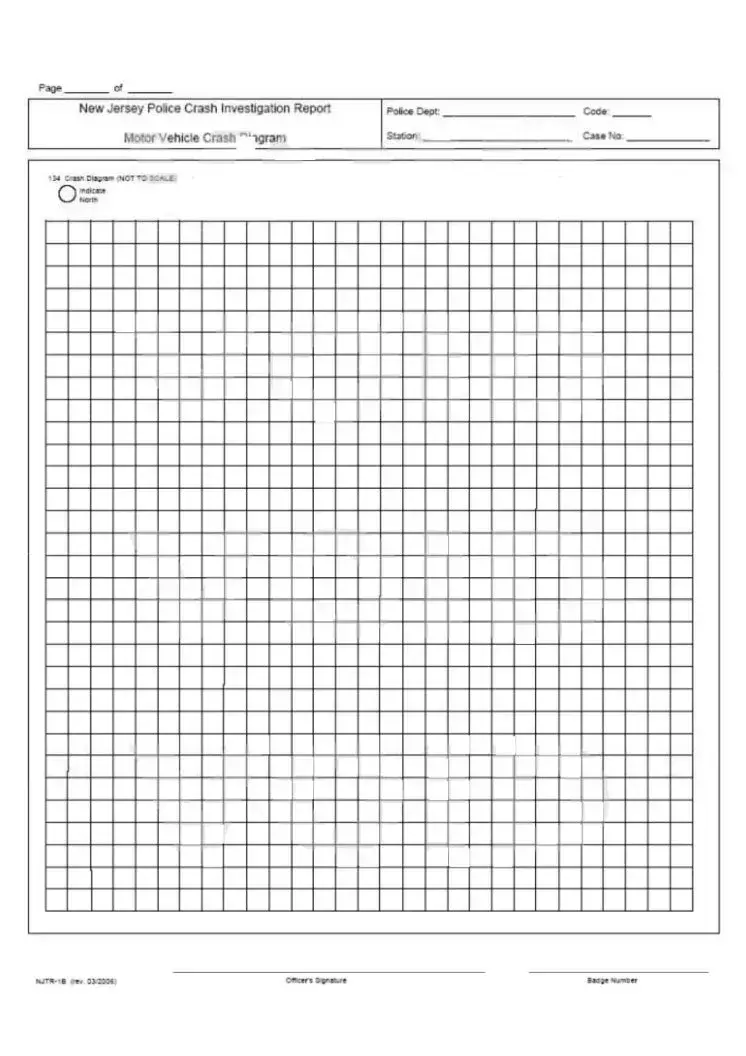What is the NJTR-1 form?
The NJTR-1 form, also known as the New Jersey Police Crash Investigation Report, is a document used to report vehicle crashes in New Jersey. It collects essential information about the incident, including details about the road conditions, vehicles involved, and the parties affected. Accurate completion of this form is important for official records and legal purposes related to traffic incidents.
Who is required to fill out the NJTR-1 form?
The NJTR-1 form must be completed by law enforcement officers who respond to a vehicle crash scene. They gather information from all parties involved, as well as any witnesses present. It is the responsibility of the officer to ensure that all necessary sections of the form are filled accurately and completely, especially the first seven boxes which are mandatory for all pages.
What information is typically included in the NJTR-1 form?
The form includes a range of information, such as the types and conditions of vehicles involved, the location and nature of the road, weather and environmental conditions at the time of the crash, and the circumstances surrounding the incident. It provides categories like crash types, vehicle types, and details on injuries sustained, allowing for a comprehensive overview of the accident.
How does the NJTR-1 form categorize vehicle types?
The form has specific categories for different vehicle types to accurately classify those involved in the crash. Options include personal vehicles like cars and motorcycles, commercial vehicles, and specialized vehicles such as ambulances or school buses. This categorization helps in analyzing accident trends and enforcing safety regulations based on vehicle type.
What should one do if they find an error on the NJTR-1 form?
If there is an error on the NJTR-1 form, it is crucial to address it as soon as possible. The officer who completed the report can submit an amendment if necessary. Individuals involved in the accident can also request a review of the form for any inaccuracies that may affect insurance claims or legal matters. Keeping your records accurate is essential for resolving any disputes that may arise from the incident.
When is the NJTR-1 form necessary?
The NJTR-1 form is required whenever a vehicle crash occurs that involves injury, property damage, or fatalities. Even minor accidents might necessitate the completion of this form, as they contribute to broader traffic safety data. Law enforcement will decide if the report is essential based on the details of the incident, ensuring that all significant events are officially recorded for future reference.
